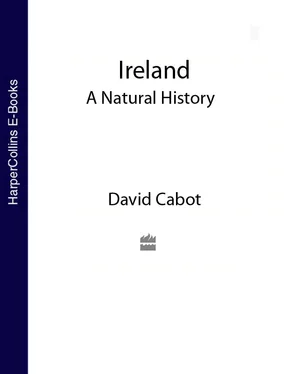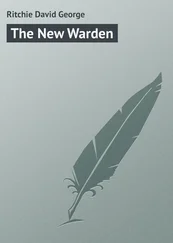The other interesting place for arctic-alpines and alpines is a section of the north-facing cliffs some 5 km northeast on the Tievebaun Mountain, Co. Leitrim. The cliffs are northwest of Glenade Lough. The exciting section extends for about 800 m at an altitude of 213–366 m. Many species already growing at Annacoona are found here, together with the chickweed willowherb, a unique speciality of these precincts. First discovered here by R.M. Barrington and R.P. Vowell in 1884, it is a low, small, creeping, almost hairless willowherb with runners above the ground. The flowers are purplish-pink and the seed pods turn red when ripe. Partial to streams and wet places, especially dripping rocks, this willowherb has two sites at Glenade. The first is a wet cliff, where 100 plants grow in an area of about 25 m 2. The second occurs along a small stream where a 30 m stretch accommodates about 70 plants. Also at Glenade, on an inaccessible vertical cliff, is the northern rock-cress, at one of only two locations in Ireland, the other being a site in the Galty Mountains, Co. Tipperary. 16This rock-cress is a small, slightly hairy plant with lobed lower leaves and small white, sometimes lilac flowers born on flowering stems some 8–25 cm tall. The seeds are carried in a long flattened pod. Golden saxifrage is here, found in wet spots on the cliff between 215 and 366 m. It is low and loosely tufted perennial with spreading and creeping stems that are square. The flowers are small, yellowish and without petals. Wych elm and rock white-beam grow on the cliff face wherever they can get a toehold.
One curious feature of Benbulbin’s flat top, as previously mentioned, is its covering by a thick blanket of peat bog, with all the attendant peatland plants. Where the underlying limestone pokes up through the vegetable skin a calcicole flora develops including several alpine species. During the colonisation process several species of mosses, especially Breutelia chrysocoma, settle on the limestone pavement, thrive and proliferate, and they soon produce layers of humus which can then be colonised by the seeds of heather and other ericaceous species. The new arrivals draw most of their nutrients from the acidic moss humus rather than from the limestone below by ensuring that their roots grow initially upwards or horizontally. 30Gradually the bog builds up, becoming more and more acidic with time, and the plants then exist on whatever nutrients they can draw from their own mounting pile of peat humus plus those that fall out of the sky with the rain.
Slieve League, Co. Donegal
‘One of the finest things of its kind’ was how Praeger described the mountain of Slieve League which brutally confronts the Atlantic Ocean at the end of the southwestern promontory of Co. Donegal. Made up of very old rocks – ancient schists, gneisses and quartzites laid down some 500 million years ago and then thrust up in the Caledonian upheavals – Slieve League rises to 595 m at its summit. It is essentially a quartzite peak, with some Carboniferous sandstone and even less limestone occurring on the summit. Like the Benbulbin mountain range it was almost certainly ice-free in days of glacier supremacy, a haven for arctic-alpine plants and other refugees. The southern side of the mountain has been truncated by the continual pounding of the Atlantic to form some of the most impressive cliffs in Europe. At sunset, the cliff structures, made mainly of quartzite and gneiss, glint and reflect the light in a way that signals their long and tortured history. On the north side of the mountain more cliffs plummet from about 460 m, equally dramatically, down to the dark and seemingly sinister Lough Agh that sits at an altitude of 245 m. Starting from the village of Teelin to the southeast, one of the best walks in Ireland can be had by ascending the summit including a bracing passage along a knife-edge ridge, appropriately named ‘One Man’s Path’. The northern precipice is one of the finest sites in Ireland for arctic-alpine plants and has attracted the attention of many distinguished botanists and naturalists for more than a hundred years. The number of arctic-alpine species is greatest here, and progressively declines southwards down the west coast and even more rapidly as one moves southwards along the east coast of Ireland.
Not only is the total number of arctic-alpine and alpine species on the north-facing cliffs of Slieve League the largest in the country but there are more species here than in any other similar habitat of comparable size in Ireland. Hart, who lived in Donegal and was at leisure to climb up and down Slieve League, reported many in his Flora of the County Donegal , 31thus supplementing earlier work. 32The species, listed again later by Praeger in The Botanist in Ireland include bearberry, green spleenwort, stiff sedge, mountain avens, dwarf juniper, alpine clubmoss, mountain sorrel, alpine bistort, holly fern, dwarf willow, alpine saw-wort, yellow saxifrage, purple saxifrage, starry saxifrage, roseroot, lesser clubmoss and alpine meadow-rue.
Slieve League cliffs, Co. Donegal.
H. J.B. and H.H. Birks, together with Ratcliffe, visited Slieve League in September 1967 when they explored the shattered and gully-seamed cliff above Lough Agh. 33The most interesting site here is a north-facing outcrop of calcareous schistose rocks extending for about 91 m at an altitude of 400–460 m. They added the brittle bladder-fern and mountain everlasting to the list for the area as well as recording 29 bryophytes of interest. Most of these are characteristic of calcareous rocky outcrops and are generally widely distributed in Ireland, apart from the liverwort Gymnomitrion concinnatum. Two mosses were of particular interest. One was the rare oceanic Leptodontium recurvifolium, providing a link between its previously known Irish localities in Kerry, Galway and Mayo and the western Scottish Highlands. The other, Orthothecium rufescens, also provided a connection between the Scottish Highlands and its previously known Irish sites on the Carboniferous limestones of Sligo and Leitrim, and the Burren, Co. Clare.
The basaltic plateau of Counties Derry and Antrim
The upland plateau that forms most of Co. Antrim and three-quarters of eastern Co. Derry is made up of volcanic outpourings that settled out over the landscape in level sheets of lava as recently as 65 million years ago. This is, therefore, the newest part of Ireland. The northern edges of the plateau from Lough Foyle in the north to Belfast Lough in the east are scarped with some impressive cliffs. Where the basalt cooled slowly it split up into a series of vertically jointed polygonal columns which appear in their most dramatic form at the Giant’s Causeway.
Basalt rocks are composed of 45–55% silica and are classified as basic rocks. They also contain lime, and disintegrate through weathering to produce a comparatively fertile clayey soil, rich in calcium carbonate, providing an attractive environment for many arctic-alpine and alpine plants. Binevenagh, Co. Derry, in the northwestern part of the plateau, looks out over the flat and sandy coastline of Magilligan. Binevenagh has high and dramatic north-facing cliffs, standing over a jumbled, tortured mass of land slips, fallen rock and other debris. These cliffs are famous as one of the best locations in Northern Ireland for a wide range of arctic-alpine and alpine plants growing at uncharacteristically low levels. In fact, the interesting species reported here include two plants not found anywhere else in the province: purple saxifrage, growing sparingly between 275 and 330 m, and moss campion. The moss campion, noted here for its profuse growth and for having flowers that range in colour from deep purple to white (rare), is especially abundant around the screes above Bellarena and at the eastern end of the cliffs. Other species present are alpine scurvygrass (not seen recently 34), hoary whitlowgrass, mountain avens on the cliffs at 240–335 m, limestone bedstraw, dwarf willow and juniper.
Читать дальше












